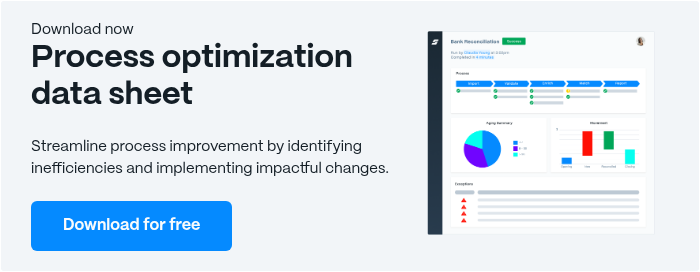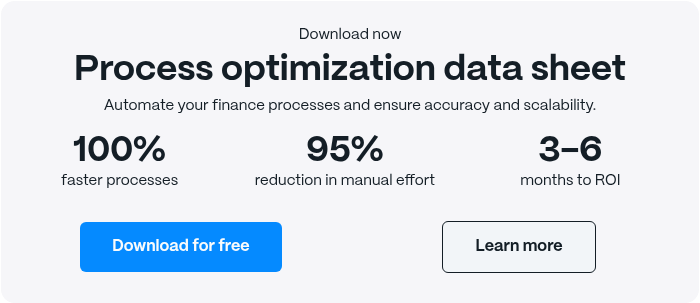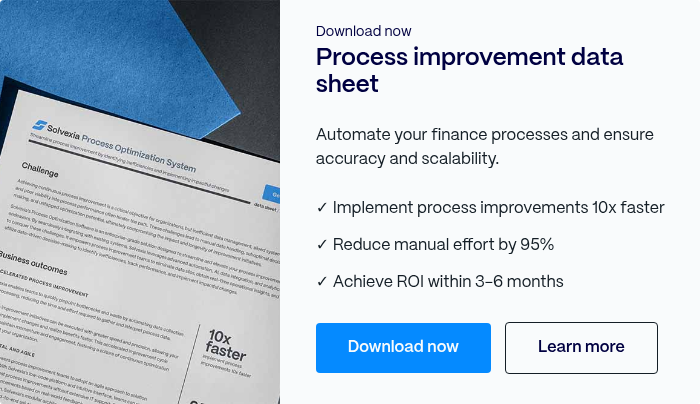5 Must Know Tips for Operational Effectiveness
.jpeg)
In business, competition is inherent and therefore, inevitable. When it comes to product development (innovation, customer satisfaction, and the like), it’s important to strive to be better and more effective with business resources. This is achievable through operational effectiveness and its respective best practices. However, operational effectiveness should not be confused with strategy.
Let’s take a look at what operational effectiveness means, how it differs from strategy, and how to improve operational effectiveness. But first it is important define operational effectiveness and what it means in business.
Table of Contents
1. Define Operational Effectiveness
2. What is Operational Effectiveness?
3. What Elements Contribute to Effective Work?
4. Operations Effectiveness vs. Strategy
5. How to Improve Operational Effectiveness
Define Operational Effectiveness
Operational effectiveness in the workplace involves all the output by human and technological resources within a business. It is the value stream of an organisation that’s driven by design and operational strategy (best practices). It includes all aspects of operating a business in a manner to be better, or quicker, while avoiding errors.
What is Operational Effectiveness?
Operational effectiveness is achieved when a business maximises the use of inputs to produce its outputs. By doing so, the business can gain a competitive advantage within its market and develop products at a faster rate. It comes down to possessing the ability to outperform competition by providing employees with resources to do so without sacrificing quality.
Operational effectiveness should not be confused with or thought of as a strategy. Instead, it is the means by which an organisation achieves its business strategy while maintaining efficiency.
Operational effectiveness can be broken down into four main components. They include:
- Leading and controlling performance
- Measuring the process and improving
- Automating processes
- Continuously improving performance
What Elements Contribute to Effective Work?
In order to develop and support an effective work environment, employees must have access to the following elements:
1. Infrastructure
Infrastructure refers to the tools, technology, resources, and tangible items that are needed to turn an input into an output. By focusing on the infrastructure, you can spot and remove inefficiencies. Infrastructure also consists of data analysis to assess how the company’s structure and supplies are working in its favor.
2. Company Culture
An undesirable work environment filled with stress can lead to disengaged and burned out employees. Develop a company culture that prioritises work/life balance, implement a wellness program, and care about your employees’ needs so that they feel supported and can operate at their highest potential.
3. Good Management Skills
Adequate training and support is also required for effective work. Employees should feel empowered and safe to ask for help or communicate with their management team. Managers should lead by example and recognise good work.
4. Succession Planning
When you prepare employees internally to fill open and higher-level positions, you are aligning the business’ incentives with employees’ incentives to grow. The highest-performing individuals will stand out, and those are the types of employees that can help achieve operational effectiveness.
Operational Effectiveness vs. Strategy
According to Michael Porter of the Harvard University Institute for Strategy and Competitiveness, it’s imperative to understand that business strategy and operational effectiveness are not the same thing.
While you can have strategy to be operationally effective, it is not the strategy of why your business is different from your competition.
- Operational Effectiveness deals with establishing and extending best operating practices. It concerns the validation and execution of processes once they’ve been prescribed.
- Strategy is the unique value proposition of a business and how you define your competitive differentiators. It comes down to highlighting key competitive advantages.
Put simply, operational effectiveness involves:
- Resource Evaluation
- Optimisation (lowering costs and maximising output)

How to Improve Operational Effectiveness
1. Create Clear Communication & Foster Collaboration
For starters, it’s pivotal to communicate both internally and externally as to what your value proposition is and how it is achievable through business goals and operations. By establishing a secure and accessible network of information between departments, you can avoid the bottlenecking of processes, which cause inefficiency and increased costs.
By creating a communicative and collaborative culture that rewards teams that work together and by developing teams that have complementary skills, your entire business will run more smoothly and be able to have a customer-centric approach in every department. Achieving this puts effectiveness into place, naturally.
To adequately communicate with customers, use a CRM and leverage data to anticipate their needs. For example, if your data system is receiving many complaints or customer service requests about a similar issue, the responsible department should be aware and ready to fix the problem before it grows. Operational problems are an expense, so the sooner they are nicked, the better is is for your bottom line.
Key Takeaway: Your organisational effectiveness is driven by people. Prioritise its accessibility and communication so that they can work together to ensure business runs smoothly.
2. Understand Delivery Management
To ensure the highest quality of products, delivery management takes product management to the next level. In order to give customers what they are promised, the role of a delivery manager is to synchronise all steps from people and processes to oversee execution.
In coordination with internal teams, the board of directors and third party vendors, to name a few, delivery management takes the product or service through its life cycle to ensure the optimal customer experience. Delivery management will involve the communication across teams and access to resources throughout the business to ensure effectiveness.
Key Takeaway: There needs to be a responsible party involved throughout all business processes to oversee execution and efficiencies.
3. Focus on Knowledge, Operational Learning & Infrastructure Management
To establish efficient processes, training and development come first. Operational learning requires the collaboration of managers and employees to be on the same page. Begin by defining and documenting best practices for each department and make it easy for employees to find information. For example, you may want to consider creating a “Resources” folder in a shared drive for 24/7 reference.
The latter also involves infrastructure management, or ensuring that business resources are organised in the most efficient way so that employees don’t face roadblocks when trying to get their work done. One of the easiest ways to check in on this aspect of business is to have managers measure productivity and communicate with employees where pain points may be occurring so they can be resolved.
Be sure to measure and manage outcomes. You know the saying, “nothing measured is managed,” so encourage managers to proactively identify issues in the process, systems and tools without being afraid to refine or change processes. This is so that you can identify where inefficiencies reside and resolve them. Flexibility is key, and when a change is made, you have the data and analytics to evaluate whether or not it was a move towards efficiency.
Key Takeaway: To improve operational effectiveness, define goals and create infrastructures that supports successful outcomes. Be sure to use data and analytics to assess if processes are optimised.

4. Leverage Technology with Resource Management
In order to achieve effectiveness, technology is undoubtedly going to be a part of the equation in any business. Make use of smartphones, tablets, and laptops as because they allow for employees and customers to be connected to the business around the clock and from anywhere in the world. Inefficiencies can arise when employees are traveling, for example, but with technology, you can avoid missing a beat.
The optimisation of technology involves proper resource management. Managers can help teams prioritise and train teams cross-functionally to eliminate single points of failure. Thus, if an employee is sick, on vacation or leaves the company, no point of a process gets dropped.
Furthermore, with software sharing tools, all people in the business can be involved in current business operations and understand what part of the life cycle a product or customer is currently in. Don’t keep plans and schedules locked away.
Key Takeaway: Your resources are only as good as the people who use them. Invest in training and tools.
5. Improve Employee and Customer Retention
On average, it costs 5 times more for customer acquisition than it does for customer retention. This means that you’ll want to prioritise customer retention to avoid customer churn. Ways to do this include: asking for feedback, offering incentives, rewarding loyal customers, being communicative and on-boarding and nurturing new customers.
When it comes to employee retention, you’ll want to hire correctly for talent and culture from the get go, because each time you train an employee it is expensive across all resources including time, money and effort. Offer the opportunity for continued learning as well as professional and personal growth to increase employee satisfaction, and therefore, reduce turnover. Additionally, human resources are a major benefit to operational effectiveness because they can design and facilitate new business practices.
Key Takeaway: Employee and customer satisfaction should be a primary concern as their happiness and retention reduces costs and drives business forward.

Bringing It All Together
Operational effectiveness comes down to all the work that gets executed to provide a customer with what the business promises to provide.
By establishing best practices and managing knowledge, resources, infrastructure, and communication, an organisation can optimise this to set in place processes that decrease costs and maximise output, thereby, exceeding business goals and beating the competition.
FAQ
Intelligent reconciliation solution
Intelligent rebate management solution
Intelligent financial automation solution
Intelligent Financial Automation Solution
Intelligent financial automation solution
Intelligent financial automation solution
Intelligent financial automation solution
Intelligent financial automation solution
Intelligent regulatory reporting solution
Free up time and reduce errors
Recommended for you

Request a Demo
Book a 30-minute call to see how our intelligent software can give you more insights and control over your data and reporting.

Reconciliation Data Sheet
Download our data sheet to learn how to automate your reconciliations for increased accuracy, speed and control.

Regulatory Reporting Data Sheet
Download our data sheet to learn how you can prepare, validate and submit regulatory returns 10x faster with automation.

Financial Automation Data Sheet
Download our data sheet to learn how you can run your processes up to 100x faster and with 98% fewer errors.

Financial Automation Data Sheet
Download our data sheet to learn how you can run your processes up to 100x faster and with 98% fewer errors.

Financial Automation Data Sheet
Download our data sheet to learn how you can run your processes up to 100x faster and with 98% fewer errors.

Financial Automation Data Sheet
Download our data sheet to learn how you can run your processes up to 100x faster and with 98% fewer errors.

Financial Automation Data Sheet
Download our data sheet to learn how you can run your processes up to 100x faster and with 98% fewer errors.

Financial Automation Data Sheet
Download our data sheet to learn how you can run your processes up to 100x faster and with 98% fewer errors.

Rebate Management Data Sheet
Download our data sheet to learn how you can manage complex vendor and customer rebates and commission reporting at scale.

Top 10 Automation Challenges for CFOs
Learn how you can avoid and overcome the biggest challenges facing CFOs who want to automate.
.svg)









